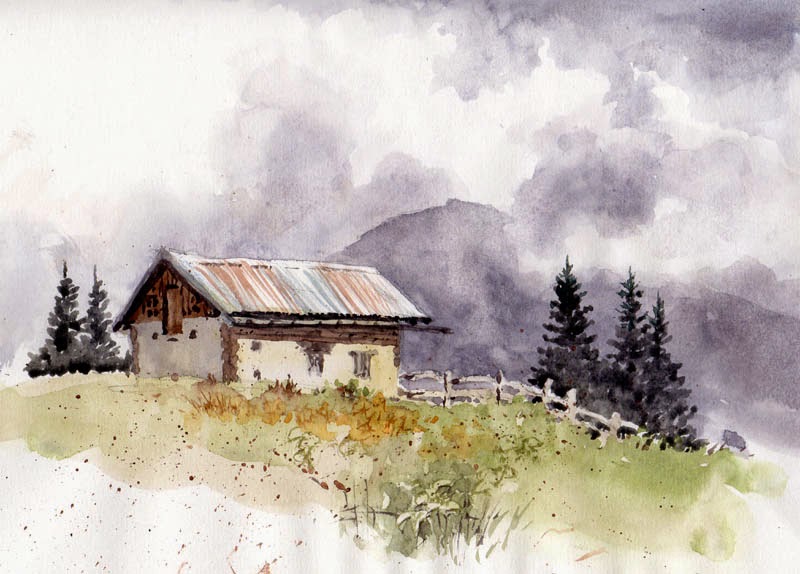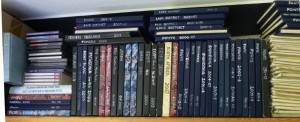Jenny and I have just returned from Austria where we took a group to paint Alpine scenery. It was a great trip, with many memorable scenes, despite rather a lot of cloud and mist. So we had rather a lot of practice in rendering misty mountains in watercolour!

Here I’m doing a watercolour demonstration way above the clouds, with marvellous views all round as the mountains rise out of the inversion. Alas, there were even more clouds above us, so we did get a little rain near the end of the demo, but not enough to spoil things. A cappuccino and an apple-strudel quickly restored morale.
Mist on mountains can, for the artist, sometimes be both magical and a misery. I love the way it can blot out unwanted features, but as we all know, it often blots out the very features we want to see!
There are a number of ways of creating mist in watercolour. In this scene above the Inn Valley in Austria I ran colour into wet areas to create soft edges to the clouds. I had to work quickly as I was painting on a cartridge book. With such a lot of cloud edges, inevitably some dry hard-edged before they can be corrected.

This is not usually a problem as they can later be softened with a damp brush when the paper is completely dry, though the odd hard edge here and there might well enhance the clouds.
Alternatively a soft sponge is an excellent tool for softening off, but take care if you use cartridge paper as it won’t stand too much surface friction. Enjoy your clouds!






